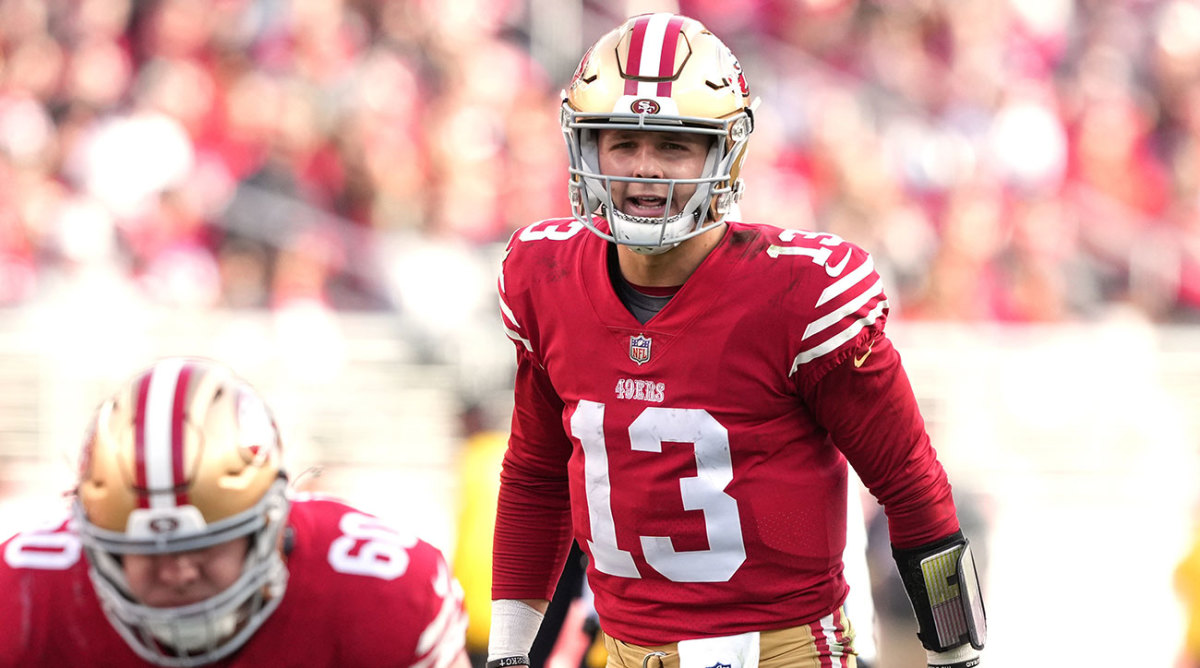The Brock Purdy Effect: Experienced College QBs Are Moving Up the Draft Boards

Thanks to a headline-grabbing combine performance by Florida quarterback Anthony Richardson, we will allow ourselves to be swept up in a predictable, annual game of prospect thimblerig in which we reimagine a hierarchy that was put in place months ago by scouts and evaluators who had just finished grading the only thing that truly matters: live game reps and game film from the previous season.
This is not to take away from the strides Richardson has taken over the past few months, his natural abilities or how NFL-ready he may have been in the first place (he may very well have been the second-, third- or fourth-best prospect in this class before the combine and remains the second-, third- or fourth-best prospect after it’s concluded). But, it’s a recognition of our basic instincts: to want to make something of the combine and envision this as more of a fluid process than it really is. But other than a meddlesome owner getting involved, our search for a true quarterback “riser” may be somewhat fruitless.
Still, that doesn’t mean the combine came and went without a more weighted value on certain quarterbacks. Just, maybe, not the ones we were thinking of.

When I called around after the combine, I was informed of what we’ll now call the Brock Purdy effect. Purdy was, in case every broadcasting crew from Dec. 4 (his first significant playing time) through the NFC championship game forgot to tell you, the last player selected in the 2022 draft. Were it not for a serious arm injury in the NFC championship game, which knocked him out for half a year, we could very well have been talking about Purdy in the Super Bowl and supplanting Trey Lance as QB1 in San Francisco this spring.
We wrote about Purdy multiple times late last season, most presciently about how much better he got between the end of his final collegiate season and the beginning of his NFL career. But we also wrote about his library of game experience (he started at least 10 games for Iowa State in each of his four years of college, logging more than 1,400 live passing reps). While Purdy is an outlier in terms of his success, and not every quarterback is going to land in San Francisco with Deebo Samuel, Christian McCaffrey, George Kittle and Brandon Aiyuk, there are some basic facts to consider about the NFL right now. Forgive me if you’ve heard some of this before.
Position players are better than ever. Offensive schemes are better than ever. Defenses are at a bigger disadvantage than ever. While a team should never give up its search for a Patrick Mahomes, there is a great deal of value in finding a quality point guard who can simply distribute the football to the talent. This is especially true if we remain in a Vic Fangio world, where defenses are more focused on containment.
So, a few players in this year’s draft class—Hendon Hooker (Tennessee, 45 games, 944 attempts), Clayton Tune (Houston, 47 games, 1,497 regular-season attempts), Max Duggan (TCU, 47 games, 1,225 attempts), Malik Cunningham (Louisville, 56 games, 1,104 attempts), among others—could see more teams clamoring for their services earlier than they might have a few years back. As it was explained to me, perhaps fifth-, sixth- and seventh-round picks will become third-, fourth- or fifth-round picks.
In talking to people for the Purdy story last year, one of the underlying points that stood out to me was this: A massive body of work used to be a bit of a disadvantage for quarterbacks. The more you put on film, the more scouts could sort of glaze over any marginal improvements. Much like a long-running television series, some of the nuance gets lost because the main character is so familiar.
Watch the NFL with fuboTV. Start your free trial today.
That’s why, when the viewing public, or even some scouts, see someone like Lance, where there is high upside with a very limited sample size, they can sometimes favor the unknown.
In a perfect world, a team gets to see otherworldly athleticism, arm power and strength displayed over a large sample size (Patrick Mahomes had 32 games at Texas Tech and attempted almost 1,400 passes). In a very fortunate world, a team hits on someone like Josh Allen, who had just 25 games at Wyoming and fewer than 700 attempts.
In a realistic world, a team will see what the 49ers got out of Purdy last year and start to think a little more pragmatically when it comes to the position. As more quarterbacks become ingrained in teams’ running games, the attrition rates will also rise. In the Super Bowl this year, we had quarterbacks with serious high ankle sprains or high-grade shoulder sprains.
Take a look at the teams in the playoffs this past year and note all the quarterback-related injury issues. The Ravens, Cowboys, 49ers, Chiefs, Bills and Eagles all lost quarterbacks for significant periods of time. Had Mahomes sprained his ankle in October, he probably would have missed four to six weeks.
This creates an inherent value for known commodities: quarterbacks who behave the way a team expects them to behave, around which they can create reliable opportunities for their best playmakers.
Purdy and Mahomes, in their own ways, are both rare finds. However, it is easier, and more likely, you will come across a game-manager-slash-starter-with-upside in the later rounds of this draft right now than a singular quarterback star who can single-handedly alter the course of your franchise. That’s a trend worth following.
